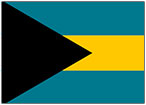- Home
- »
- Our Initiatives
- »
- Blue Economy
Blue Economy
The blue economy relates to the sustainable use, management, and conservation of marine resources through activities that bring about economic development and improved the livelihoods, whilst preserving the biodiversity richness of impacted areas. The Climate Change Division at the IDBG defines as following; “a sustainable Blue (circular) Economy “is intentionally designed to create and sustain restorative, regenerative and climate resilient economic, environmental and social harmonization which safely and efficiently utilizes the resources of the land and surrounding water.”” (IDBG, 2019).Scope of Activities
Technical Assistance
Advisory support related to subjects such as ocean conservation, ocean exploration, Blue Carbon, Sustainable Fisheries, Sustainable Aquaculture, Coastal Zone Management, Nature-based Solutions, Payment for Ecosystem Services, Eco-tourism and marine protected areas, Marine renewable energy.
Intersectoral Dialogue
Promote dialogue with regulators, capital markets and financial sector stakeholders and mobilize financing, knowledge, and networking.
Financial Instruments
Stimulate private and public funding for climate-related investment .
Where it is implemented
Why Blue Economy?
An approximate 97% of world's fisherman reside in coastal areas of developing countries and heavily depend upon marine resources for their daily sustaining livelihoods (UN). In LAC, the total population that reside in coasts is at 27% (UN Environment, 2017) and coastal tourism accounts for a US$6 billion in the Caribbean. The Sustainable Development Goal 14 “Life Below Water” (UN) identifies the importance of preserving and regenerating ocean biodiversity to secure food security and planetary boundaries. Global goods and ecosystem services provided annually by nature’s coastal areas and oceans reach an estimated worth of US$2.5 trillion (WWF, 2015). With the institutional support to scale up and implement fundamentals of the Blue Economy in LAC, the IDBG and its implementing partners aim to facilitate sustainable development and management of valuable coastal assets and preserve the region’s natural capital. The Blue Economy enables opportunities for building up capacity and strengthening regional economic, social and environmental resilience, as well as self-sufficiency for Small Island States (SIS) that are reliant on ocean resources for provision of livelihoods and sustaining GDP. In addition, the ocean space belonging to the SIS often significant dwarfs their terrestrial space and presents significant challenges and also opportunities for economic development. Resources





 Stay updated on the latest trends of Green Finance
Stay updated on the latest trends of Green Finance































